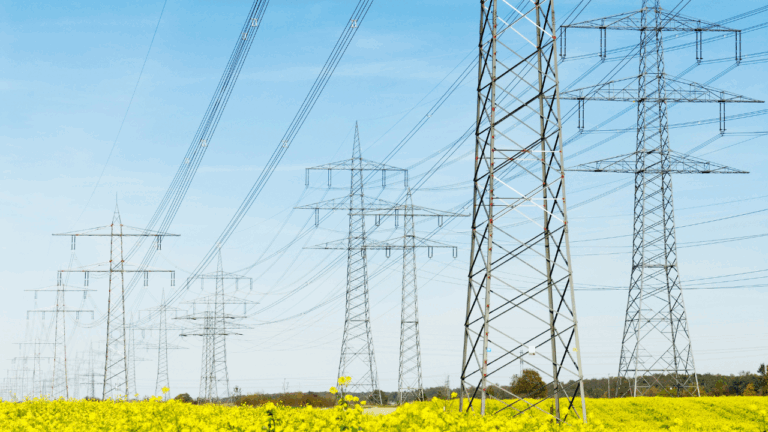Even in 2025, energy remains a major uncertainty – especially for companies without their own energy departments or direct access to the market. Those relying on standard tariffs often pay significantly more than necessary. Yet there are proven alternatives. Michael Ulverich draws on his industrial expertise to develop exactly the kind of solutions where platform capability, control, and supply security are key to economic resilience.
Michael Ulverich, former board member at machinery manufacturer König & Bauer, sees energy as a structural challenge with implications far beyond any single industry. His goal: to help SMEs cut electricity costs sustainably through purchasing cooperatives and digital control systems. In this interview, he outlines three high-impact approaches.
1. Purchasing Cooperatives for SMEs: United Access to the Leipzig Power Exchange
According to Ulverich, the most powerful lever for reducing energy costs lies in pooled purchasing. Many small and medium-sized businesses (SMEs) lack direct access to the Leipzig electricity exchange – but through cooperatives, this access becomes possible.
Companies like Würzburger Versorgungs- und Verkehrs-GmbH (WVV) pool electricity volumes and organize purchasing cooperatives. A certified buyer acts on behalf of all participants, leveraging collective volume to achieve measurable cost reductions. Ulverich cites realistic savings of 10 to 15% – without compromising quality.
This model becomes especially efficient for companies with annual consumption of around 100 megawatt-hours. “Firms of that size are too large for standard tariffs but too small for their own market strategy,” Ulverich explains. That’s where this model comes in – with professional partners, cooperative organization, and digital support.
Another innovative energy market example: Nordgröön. This company supplies electricity directly from producers to high-consumption customers – bypassing traditional utilities. The result: lower grid fees and reduced transmission losses. “Direct power purchase agreements between producers and consumers really work and provide genuine cost advantages,” Ulverich adds.
2. Solar Estate: Tenant Power as a Business Model for Property Owners
Ulverich also sees tremendous potential for property owners. As an investor and strategic advisor at Solar Estate, he supports a company focused on residential housing firms, cooperatives, and private landlords with at least eight rental units. The business model: landlords generate electricity (e.g., via PV systems) and sell it directly to tenants.
 “The tenant electricity market is still vastly underutilized,” says Ulverich. Yet it offers multiple benefits: reduced ancillary costs for tenants, higher returns for landlords, and a tangible contribution to the energy transition.
“The tenant electricity market is still vastly underutilized,” says Ulverich. Yet it offers multiple benefits: reduced ancillary costs for tenants, higher returns for landlords, and a tangible contribution to the energy transition.
Solar Estate handles billing, control, and monitoring – fully automated, legally compliant, and scalable. Especially amid rising energy prices, the tenant electricity model is becoming increasingly attractive for institutional and private investors. “We enable landlord-to-tenant electricity sales from the very first building – without major technical entry barriers,” Ulverich emphasizes.
3. Virtual Volt: The Intelligent Operating System for Electricity Use
A third key pillar in reducing electricity costs is Virtual Volt, a cloud-based platform that intelligently controls energy use, purchasing, and grid integration. It uses AI, real-time data, and market interfaces to connect energy consumers with producers.
Ulverich describes Virtual Volt as the “Windows of the energy sector” – a digital OS that shifts loads, generates forecasts, identifies ideal purchasing windows, and contributes to grid stability.
Example: In a hotel or supermarket, Virtual Volt can delay the cooling cycle of a refrigeration unit by just 30 seconds – without affecting performance. These tiny load shifts help reduce consumption peaks, stabilizing the grid. The technology behind it: peak shaving, which can significantly lower grid fees.
“Many companies pay a surcharge on their grid fees based on their single highest usage peak of the year,” Ulverich explains. “That one-time spike can drive up costs. With smart load shifting, these peaks can be flattened and charges reduced.”
“It’s all about intelligent flexibility. Sometimes, just a few seconds are enough to cut costs and enhance supply security,” says Ulverich. That’s why Virtual Volt is also attractive to municipal utilities and service providers – many of whom can white-label the solution. Interested firms are invited to join the ongoing development as partners.
Digital Energy Control – Without New Hardware
One major benefit of Virtual Volt: it requires no new hardware. Fully cloud-based, the solution integrates with existing systems and immediately delivers transparency. A central dashboard shows consumption data, savings potential, and price trends – with automated reports for environmental and financial reporting.
“Until recently, only large corporations had access to such control systems,” says Ulverich. “Now we’re bringing them to SMEs.” Those who generate their own electricity – e.g., via solar – benefit even more. Virtual Volt can decide when it’s best to use self-generated energy or when it’s cheaper to buy from the grid.
Ulverich is also working with Google Germany to integrate Virtual Volt into IoT infrastructures, allowing real-time, intelligent electricity management. The goal: to orchestrate energy flows scalably and efficiently – straight from the cloud, with no new hardware.
Ulverich’s Role: Visionary, Investor, and Strategist
Ulverich no longer sees himself as a classic entrepreneur. Rather, he acts as a strategic investor, visionary, and business angel. “I bring 25 years of industrial experience and digital leadership,” he explains. “At König & Bauer, I was responsible for the digital transformation of a global engineering company. Today, I apply that expertise to make the energy sector smarter, more efficient, and more resilient.”
He keeps his future open: “In the long term, I remain open to strategic leadership roles – such as CEO or COO – especially where digitalization, industry, and energy intersect. That’s where I see the greatest impact and need for strategic execution.” He currently contributes his experience in leadership, tech, and markets as an advisor, sparring partner, and board member – especially in complex transformation phases.
Conclusion: It’s Time to Act – Digitally and Together
Ulverich is convinced: the energy crisis was a wake-up call – and also an opportunity. With purchasing cooperatives, tenant electricity models, and digital platforms like Virtual Volt, SMEs, the housing sector, and property owners can sustainably lower energy costs while building greater independence and resilience.

“Optimism drives us,” he says. “But we have to do our homework. We already have the tools and the technology – now we need leadership and the courage to act.”
Are you an SME or in the housing sector?
Looking to reduce your electricity costs and implement new energy solutions?

Then reach out to Michael Ulverich directly to arrange a non-binding consultation. He’ll help you lower your electricity costs significantly – using digital tools, strong partnerships, and proven concepts.
📩 ulverich@web.de
